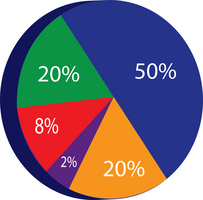How to Evaluate and Select Index Funds

Navigating the stock market can be overwhelming for individual investors. The fluctuations in stock prices often seem disconnected from the actual performance of the underlying businesses, leading many to pull back from investing in individual stocks. This uncertain environment has prompted a shift towards safer investment vehicles.
However, it’s essential to recognize that keeping your funds in cash, money market accounts, or bonds can carry significant risks as well. The yields on these traditional investments are often only marginally above inflation rates, meaning that in real terms, your money could be losing value over time. In this context, passively managed index funds can present an appealing alternative. These funds typically require no active management, allowing investors to focus on price when making their selections.
Selecting the Right Index Fund
1. Determine Your Investment Focus
The first step in choosing an index fund is to identify which index you want to track. Many investors opt for well-known broad indices like the S&P 500 or NASDAQ, which represent a wide array of companies. However, there are also index funds tailored to specific markets, geographic regions, or industries. For instance, if you’re interested in technology, you might look at funds that track tech-heavy indices. Once you’ve pinpointed your desired index, you can start comparing available funds.
2. Understand Costs and Fees
Every fund comes with its own set of costs, which can impact your overall returns. While index funds typically feature lower management fees compared to actively managed funds, they still incur costs associated with buying and selling securities to maintain alignment with their respective indices. Additionally, each fund will have an expense ratio that covers operational costs. It’s crucial to compare only those funds that track the same index to get an accurate picture of their costs.
3. Avoid Sales and Transaction Fees
When considering index funds, it’s important to avoid sales loads and transaction fees. The performance of various funds tracking the same index should be nearly identical, so there’s no reason to pay extra fees to invest in one fund over another. If you’re considering a fund that tracks a specialized index with limited options, check to see if there are alternative funds available that don’t charge these additional fees.
4. Consider Minimum Investment Requirements
Another critical factor often overlooked is the minimum investment required for an index fund. Some funds have high minimums that may necessitate liquidating other investments, which can incur costs. If a fund’s minimum investment is too high for your current portfolio strategy, it’s essential to consider whether this aligns with your financial goals.
The Benefits of Index Funds
Investing in index funds can be an effective strategy for gaining exposure to the equity markets without the complexities and risks associated with selecting individual stocks. Moreover, they generally have lower fees compared to actively managed mutual funds. By focusing on funds that track similar indices and comparing their fee structures, you can make informed decisions about where to allocate your investment dollars.
In summary, the stock market may seem daunting, but understanding how to choose low-cost index funds can help mitigate some of the risks involved. By determining your investment focus, thoroughly assessing costs and fees, avoiding unnecessary charges, and considering minimum investment requirements, you can position yourself for more stable and rewarding investment outcomes. Investing wisely in index funds may provide you with a balanced approach to grow your wealth over time while navigating market uncertainties.




